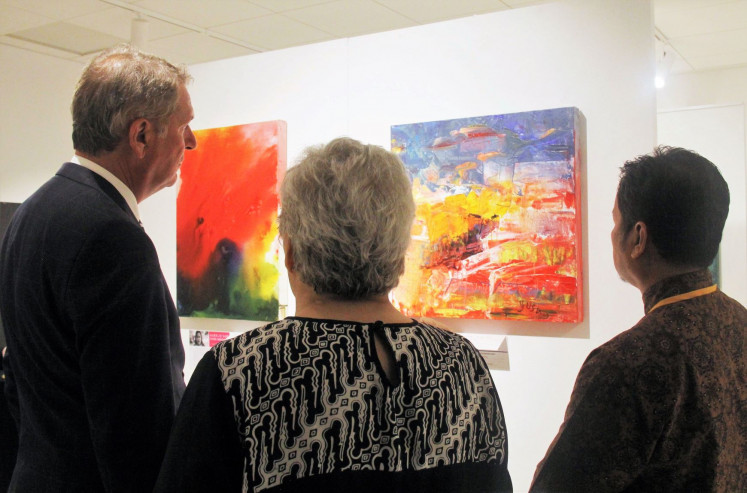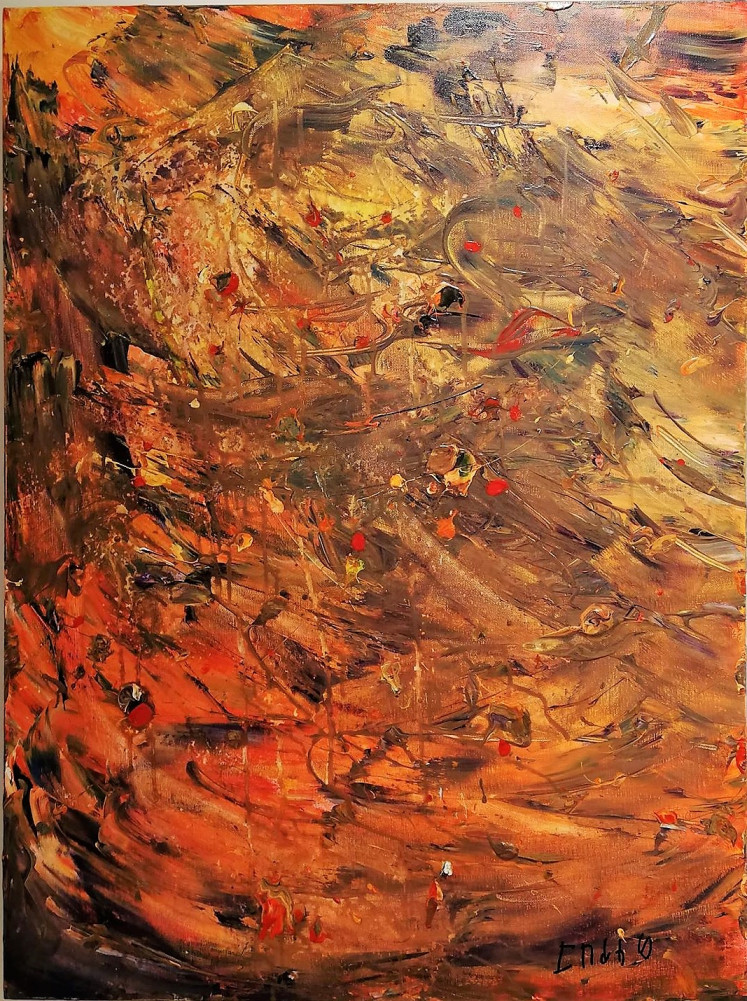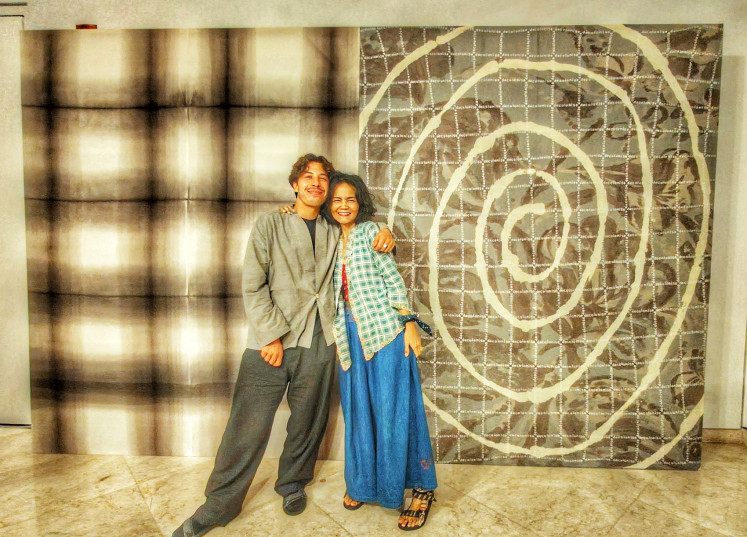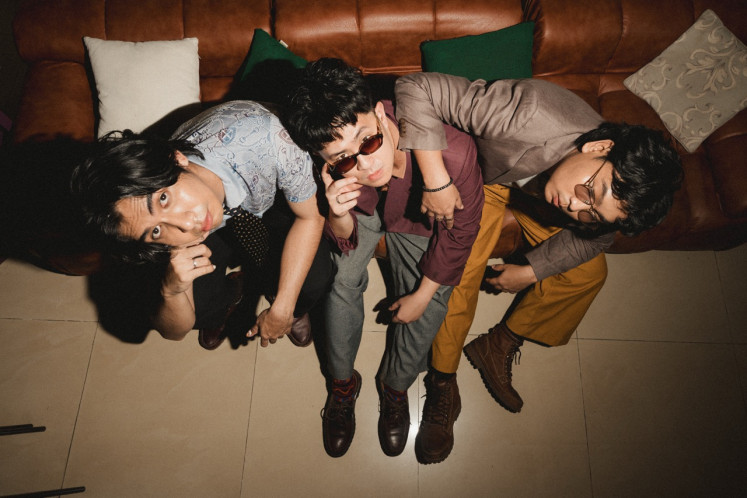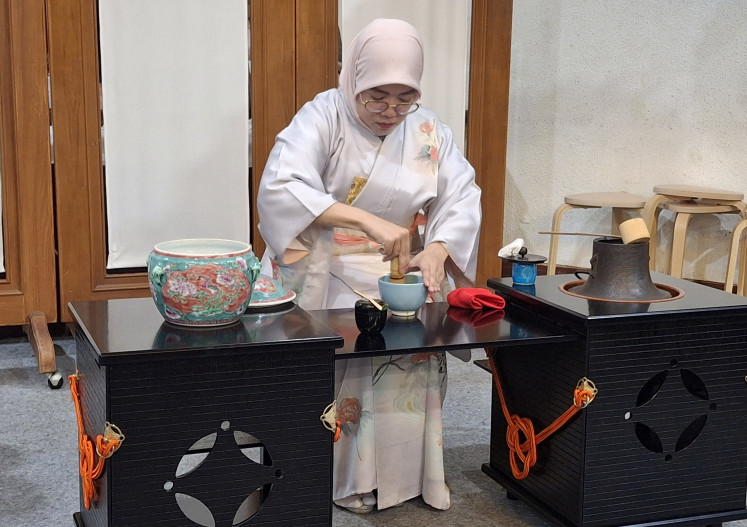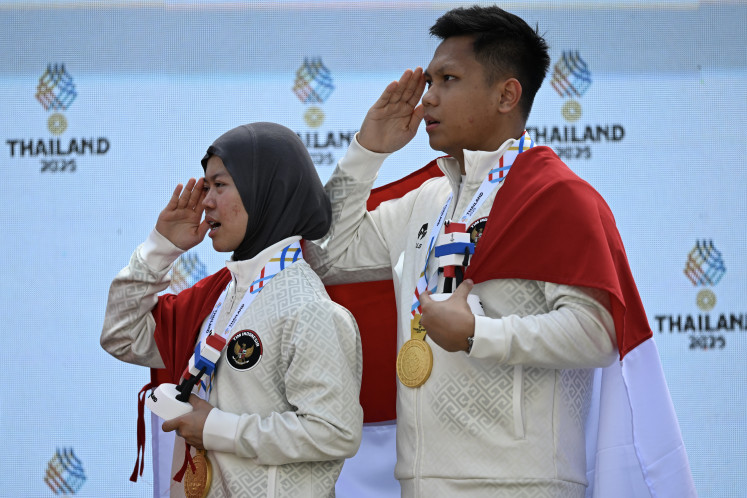Popular Reads
Top Results
Can't find what you're looking for?
View all search resultsPopular Reads
Top Results
Can't find what you're looking for?
View all search resultsSpeaking through Color: Exhibition showcases paintings by artists with special needs
How do you express yourself if verbal language is inaccessible? This is the challenge experienced by people with disabilities who are non-verbal and therefore cannot communicate through speech.
Change text size
Gift Premium Articles
to Anyone
H
ow do you express yourself if verbal language is inaccessible? This is the challenge experienced by people with disabilities who are non-verbal and therefore cannot communicate through speech.
Teachers at Jakarta's Daya Pelita Kasih center believe the answer is through creating art.
The center supports students of all ages who have unique and specific needs relating to their disabilities that include dyslexia, attention deficit disorder (ADD), cerebral palsy, down syndrome as well as learning and behavior difficulties.
Some of the students have Autistic Spectrum Condition (ASC), and therefore struggle with social skills, speech and nonverbal communication, restricted thoughts and behaviors.
Alongside academic education, life and work skills training, the center places an emphasis on creative therapies, including music, painting and handicraft skills to support students to reach their potential.
“We started the art project for therapy purposes. When they paint they can focus more and express their feelings through the colors,” explained Katharina Lita Wewengkang, the center’s founder.
Their art programs have been so successful the foundation has put on exhibitions at various hotels in Jakarta since 2012. More recently, in 2017 the Alila Hotel in Seminyak, Bali hosted an exhibition of the student artists’ work, and last year some participated in exhibitions at the National Gallery of Indonesia in collaboration with the Cultural Attaché of the Spanish Embassy.
Their latest exhibition, “Painting a Better Future”, is hosted by Erasmus Huis in Jakarta until March 15.
Jane Gabriela is a 17-year-old artist who paints using her fingers and hands, and has been exhibiting her paintings since 2012.
Although Jane has ASC and is nonverbal, she is able to write about the meanings behind her paintings.
Referring to Doorway to a Dream (2018), Jane’s mother Elizabeth Rosalina explained the painting represents a bird’s nest: “it is about how everybody wants to have a safe place, an eagle’s nest to feel secure in”.
Color play: Dutch Ambassador for Indonesia Rob Swartbol (left) and art teacher Harry Bernadi (right) listen to Daya Pelita Kasih’s co-founder Gitta S. van Engelen’s explanation of the two displayed paintings. (Courtesy of Erasmus Huis/Andri Astarisanna)
The center’s co-founder Gitta S.van Engelen explained how emotion is reflected through the color choices students make when painting.
Student artists, she said, are encouraged in their work creation but are never pushed toward using any particular color or method.
“Red can be seen to show anger. In this one the colors are softer, and this they are harder,” Gitta said, referring to two paintings displayed side by side which reflect subtle differences in how the artists were feeling when they created the pieces.
'Waterfall Valley' by Indhy Mutiarahma (The Jakarta Post/Evie Breese)
Waterfall Valley (2019) was created by Indhy Mutiarahma, an artist with a heartwarming laugh who is also non-verbal.
Her mother Dina Cholidi described the painting as showing hope. “She uses orange to paint hope and happiness. Light blue also signifies a happy time […] There was one time [visual art teacher] Mr Harry got very frustrated because she was painting so well and then she painted everything black, maybe it was a mood swing.”
Teacher Bertha Thaga described Indhy as one of her favorite students. “The first time I taught her, it was so hard but then I tried to get to know her. Now we are best friends, not like teacher and student, but she’s like my sister.”
Social skills, including turn-taking and cooperation, are also developed through art therapy, as well as self-confidence, coordination and fine-motor skills.
Through exhibiting their art, the students are able to see the pleasure that their work brings to others – with many paintings being purchased, giving them a fantastic sense of achievement. Seventy percent of proceeds from sales go to the artists and the rest to the foundation.
“We try to help them further their ability and their strengths. They can earn something and make a living,” said Katharina.
Visitors to this exhibition cannot help but lean in to the vibrancy flowing from these paintings which instil an unwavering zest for life. (ste)
-- The writer is an intern at The Jakarta Post



